
Do you have a question about the Samsung ML-4551NR and is the answer not in the manual?
| Printer Type | Laser |
|---|---|
| Print Speed | 45 ppm |
| Print Resolution | 1200 x 1200 dpi |
| Monthly Duty Cycle | 200, 000 pages |
| Connectivity | USB, Ethernet |
| Duplex Printing | Yes |
| Memory (Standard) | 128 MB |
| Processor Speed | 400 MHz |
Essential safety guidelines for servicing, including high voltage and laser hazards.
Covers toxic materials, electric shock, fire hazards, and general safety practices.
Instructions for safe personal handling to avoid injury and printer damage.
Guidelines for careful part replacement, cable routing, and using approved components.
Warnings about high temperature parts, rotating components, and printer weight.
Procedures to prevent damage to semiconductor devices from static electricity.
A general introduction to the printer's purpose and target user.
Detailed technical specifications including engine speed, resolution, and memory.
Specifics on engine speed, warmup time, FPOT, and resolution for different models.
Details on processor, memory, printer languages, drivers, and OS compatibility.
Information on standard and optional paper trays, capacity, and media types.
Details on toner and drum life span and yield.
Data on printing volume, monthly duty, MTBF, and MTTR.
Technical details of the printer's engine hardware components.
Description of the main board's function, CPU, and circuits for printer operation.
Explanation of how various sensors (paper, cover) provide input to the CPU.
Description of the Switch Mode Power Supply and High Voltage Power Supply boards.
Detailed specifications for the high voltage outputs like transfer, fuser, and developing voltages.
Details on the power source, output channels, and power consumption.
Guide to using the Engine Diagnostic Control mode for testing printer functions.
Explanation of the EDC mode's purpose and development for engineers.
Step-by-step instructions on how to enter the EDC mode for service.
Detailed procedures for removing paper jams from various areas of the printer.
Important safety and procedural guidelines before starting disassembly.
Procedure for removing and replacing the transfer roller, with caution notes.
Procedure for removing the Main Printed Board Assembly.
Steps for removing the main motor drive assembly and its gears.
Procedure for removing the developer drive motor assembly.
Flowchart for initial troubleshooting steps based on printer status and error messages.
Troubleshooting guide for common image quality issues like lines, spots, and density problems.
Solutions for paper jams occurring in the feeding area or when paper is not exited.
Troubleshooting steps for paper jams occurring in the fuser or discharge roller area.
Solutions for paper jams inside the fuser or when paper is accordion-folded.
Troubleshooting for jams related to duplex path sensor or paper reaching the duplex sensor.
Solutions for jams when paper cannot pass the duplex sensor or reach the registration sensor.
Troubleshooting common hardware malfunctions like fuser, LSU, and motor errors.
Solutions for 'Engine Fuser Low Heat Error' or 'Engine Fuser Over Heat Error'.
Troubleshooting steps for 'Engine Hsync Error' related to the Laser Scanning Unit.
Solutions for main motor malfunction causing paper feed issues (Jam 0).
Troubleshooting steps when no lamps illuminate on the operator panel after power on.
Step-by-step instructions for replacing an empty toner cartridge.


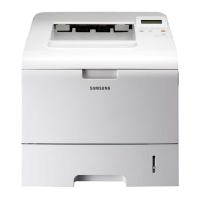
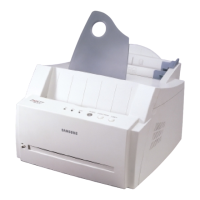
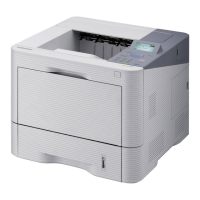
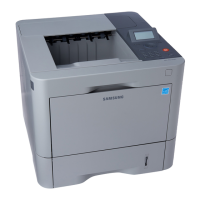





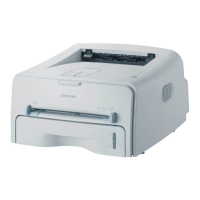
